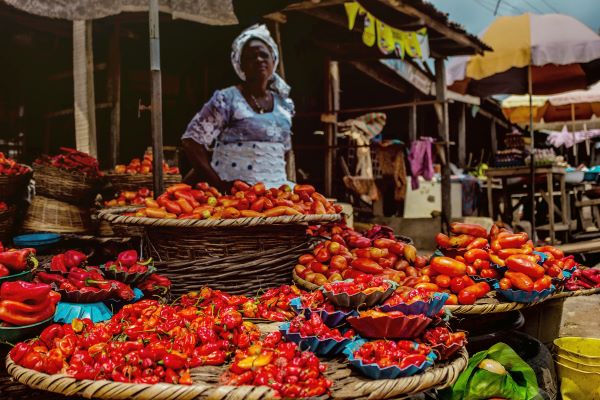Africa’s food crisis remains one of the nation’s most pervasive problems, with poverty as the focal point. Numerous families survive off subsistence farming continentwide, yet smallholder profits could increase more. However, Africa has the highest percentage of their population that needs food assistance.
Even nations outside of Africa took note and are brainstorming to generate action. It starts with food distribution — leveling food access with what’s available and increasing density. Is the food access issue too deep-rooted for this to work and how will Africa execute it if it can?
The Influences of Famine
Around 20% of Africa’s population is malnourished, harming child development. Many citizens call for long-awaited government intervention, as inaction led the continent to more hungry people. Experts believe one prominent cause is nations’ lack of attention to the agricultural sector, as it needs more resources and funds to reduce Africa’s food scarcity. Agricultural allocations in national budgets are almost nonexistent. Yet, military investments overshadow them while simultaneously destroying farmland.
The Horn of Africa alone attempts to navigate food access during a 40-year drought. A combined 58 million people are hungry or need help getting more food in this region. Food insecurity is common enough there that it’s become the norm. Drought makes the situation direr, but so does a reduction in fertilizer exports from nations like Ukraine that cannot supply during international conflict.
Structural systems like food apartheid transform food inequality into a moral concern. White supremacy and targeted policies intentionally minimize marginalized communities’ food independence. Africa’s long battle against racism, slavery and colonization directly prevents progress in food justice.
The Changes for Access
Numerous historical and governmental structures are against Africa’s ability to obtain food security and potential food sovereignty. How do these influences provide insight into crafting more resilient and stable African food distribution?
International organizations have tried to outline the best blanket plan for the world to follow to achieve food security. For example, the World Bank has food finance imperatives that revolve around:
- Incentivizing sustainable food choices for increased public support.
- Considering risks that impact financial decisions, like public health and the environment.
- Creating specific financial solutions for innovative startup food business models.
- Bridging the gap between social protections and class inequalities.
- Stabilizing erratic food markets and empowering food governance amid climate change.
These only work by analyzing synergies between public and private capital, and combining that knowledge. It includes everyone, from food distributors for increased reach to governments for more curated policymaking and banks for food system bonds.
The Focus on Demand
There are places in Africa with pockets of food — if better dispersed, citizens could suffer from fewer nutrition-related health ailments. Meanwhile, developing areas with more prominent food access see more diseases associated with more prosperous nations, such as diabetes and increased blood pressure. There is an imbalance as sellers focus on supplying close to home, bolstering already more-developed countries while neglecting the big picture.
Supplying money and food is a temporary patch, and looking at demand for other quality-of-life aspects — like public health — reframes where food should distribute first. Making farmers more aware of their unique selling proposition enhances this mindset, adding more intrinsic value to their products. They can see how it trickles into Africa’s overall well-being instead of just aiming to fix hunger.
Africa must focus on demand rather than supply to visualize and execute stable, substantial food distribution. Instead of governments using investments to provide food, they will instead empower the private sector for increased technological capabilities and greater productivity.
The way to increase distribution and output is through enhancing business infrastructure. The revenue stability will be a gradual rise in job offerings and community economic betterment. A demand-related focus tackles more foundational issues within the continent’s poverty concerns to get more food to places that need it faster.
Food Access Equates to Greater Distribution
Equitable food distribution across Africa requires reframing priorities to influence smarter budgets and government action. The more collaboration, the more it yields worldwide success instead of localized boons.

Jane is an agriculture and environmental journalist and the founder and editor-in-chief of Environment.co, where she covers sustainability and eco-friendly living.









